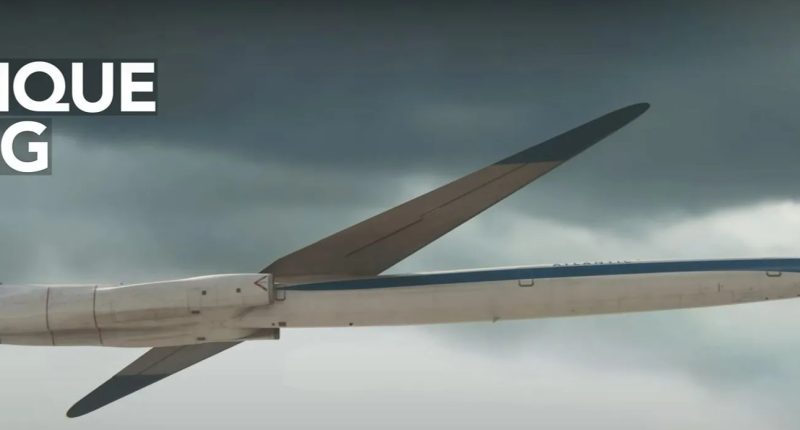THE INCREDIBLE plan for a “wonky wing” supersonic plane of the future “defied nature” with its mind-bending design.
The aircraft’s design saw it adopt just a single wing that would rotate on a centre pivot – similar to a helicopter.
The “oblique wing”, as it was known, would have had one of its tips swept forward while the opposite tip is swept aft.
As the aircraft displaces the air, a sonic wave is generated.
The design certainly raised eyebrows but it was guaranteed to offer several advantages over more conventional swept wings.
At transonic and supersonic speeds, the angled orientation minimised both wave and induced drag.
Read more in Tech
This would lead to improved overall aerodynamic efficiency without sacrificing low speed performance.
Compared to other variable geometry wings, oblique wings would also be lighter, less complex and have fewer drawbacks like a shifting centre of lift.
An oblique flying wing could drastically improve commercial air transportation, reducing fuel costs and noise in the vicinity of airport.
But since the early 1990s, budget constraints and shifting priorities have largely stalled intensive oblique wing research programs.
Most read in Tech
Plans for a radical wing were initially drawn up in the 1950’s by NASA engineer Robert Thomas Jones, but it wasn’t until the 1970’s when testing and extensive research began.
In 1979, the NASA Ames-Dryden-1 (AD-1) – a subsonic, human piloted oblique wing aircraft – began rigorous flight testing.
So far, though, it is the only manned aircraft built to explore the oblique wing concept.
Military operations have included the possibility of a long–endurance fighter vehicle.
In 2007, the US Defense Advanced Research Projects Agency (DARPA) announced their intent to design a new aircraft called the Oblique Flying Wing X-plane.
The OFW X-plane was slightly different to initial oblique wing plans, though, having been designed to become the first tailless, supersonic, variable-sweep flying wing.
DARPA claimed it would offer the promise of combining efficient high-speed cruise and long low-speed endurance, according to Flight Global.
Potential applications were set to include a long-range bomber or persistent intelligence, surveillance and reconnaissance platform.
This would give the aircraft the ability to penetrate enemy air defences supersonically and then loiter subsonically over the target area.
Wind tunnel tests for the aircraft design have been completed, with the design noted to be “workable and robust”.
The oblique wing isn’t the only aircraft design to have trouble taking off since its plans were first released.
The world’s biggest passenger plane thought to be twice the size of a Boeing 747 and carrying nearly 1,000 people was first designed decades ago.
The double decker super plane was thought up in 1996 by Lockheed Martin and would’ve blown any other passenger jet out of the sky.
READ MORE SUN STORIES
But the world’s fastest ever plane is set to hit the skies in 2025 as it promises to fly past staggering speeds of over 4,000mph.
Dubbed the “Son of Blackbird”, the SR-72 plane is part of a top-secret mission by the US Air Force to improve their aviation abilities and rule the skies.















